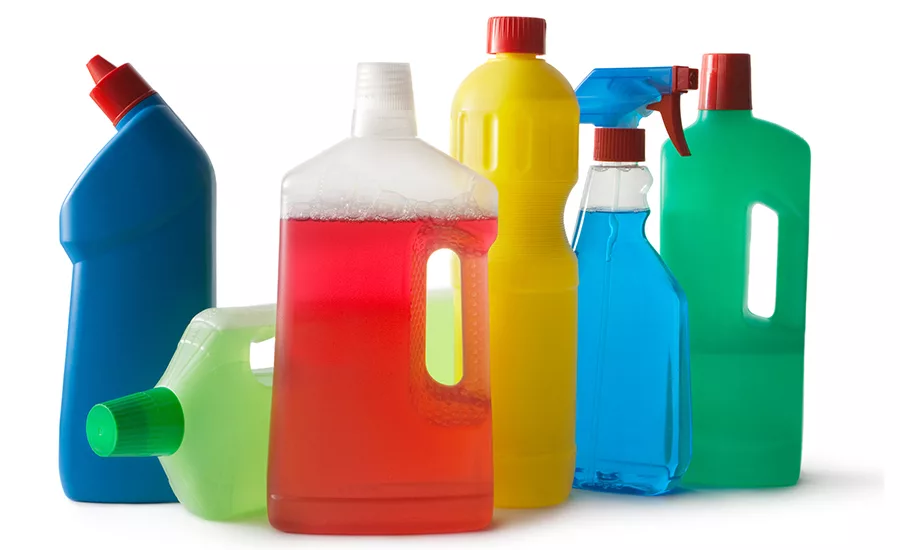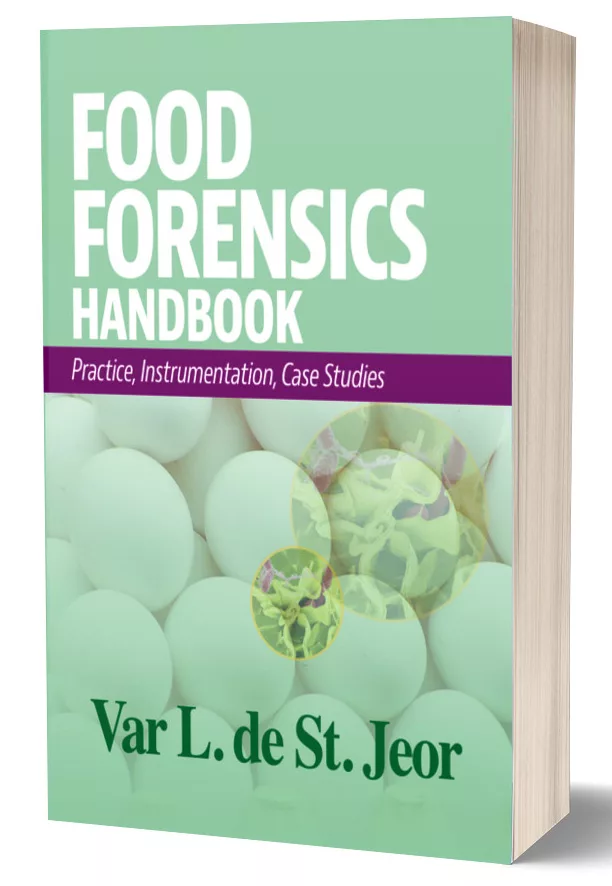Sanitation
Sanitizers: From Effectiveness to Tolerance
Which sanitizer works best depends on your food microbe of choice

With the appearance of severe acute respiratory syndrome coronavirus 2 (SARS-CoV-2), there was a renewed interest in sanitizers and disinfectants. Most food safety professionals in the U.S. are aware that sanitizers and disinfectants are not the same and must be approved by the U.S. Environmental Protection Agency (EPA). List N (disinfectants for coronavirus) gained in popularity as more people and companies were trying to eliminate the virus from their environment. It is a long list of chemicals with different contact times, depending on the product. During the initial period, some users may not have realized that all disinfectants are not created equal, although they have to meet the same acceptance criteria; some will be effective at lower concentrations, others act more rapidly, etc. To review a few facts:
- In the U.S., sanitizers and disinfectants are considered pesticides, so they are subject to the rule that the “label is the law,” meaning that only concentrations that are specified on the label are allowed. Further, most sanitizers specify a no-rinse concentration for food contact surfaces and an acceptable range of concentrations for environmental applications.
- Both concentration and contact time are critical factors.
EPA’s List N covers disinfectants effective against SARS-CoV-2. When trying to control other viruses, EPA may have approved specific antimicrobials. For example, there are lists for hepatitis C, avian (bird) flu, etc. However, for most food processing facilities, the concerns are for pathogens such as Listeria monocytogenes, Salmonella, pathogenic Escherichia coli, etc. As we will see in this article, the acceptance criteria for sanitizers are the same, whether the sanitizer contains quaternary ammonium, chlorine, iodine, etc. If you had to eliminate a resident population of L. monocytogenes or E. coli, you are likely to know that not all sanitizers will perform the same. As we will see, there are a few reasons for that.
The EPA document OCSPP 810.2300: Sanitizers for Use on Hard Surfaces—Efficacy Data Recommendations defines sanitizing success for nonfood contact surface sanitizers. The results should demonstrate a reduction of greater than or equal to 99.9 percent (a 3-log₁₀ reduction) in the number of each test microorganism over the parallel control count within 5 minutes. And for food contact surfaces, the requirement is to evaluate sanitizing success of nonhalide formulations. Acceptable results should demonstrate a reduction of greater than or equal to 99.999 percent in the number of each test microorganism within 30 seconds. The test organisms differ if the test is for food contact or nonfood contact surfaces. In both cases, there is a minimum of two microorganisms (one Gram positive and one Gram negative).
The EPA document OCSPP 810.2200: Disinfectants for Use on Environmental Surfaces—Guidance for Efficacy Testing requires a 6-log reduction or 99.9999 percent in 10 minutes or less for both nonfood contact and food contact surfaces. A disinfectant is usually a chemical agent (but sometimes a physical agent) that destroys disease-causing pathogens or other harmful microorganisms but might not kill bacterial spores. EPA groups disinfectants by product label claims of “limited,” “general,” or “hospital” disinfection. For the food industry, a label claim of “limited” means that only one of the two types of test organisms (the Gram positive or the Gram negative) met the reduction criteria, while a label claim of “general” means that both types of test organisms were reduced to the acceptable criteria.
Similar criteria apply to towelettes or sanitizing wipes. However, hand sanitizers are regulated by the U.S. Food and Drug Administration. What about in the rest of the world? It depends—many countries require approval by the national or provincial authorities. Before exporting food products to another country, it is important to verify the local regulations. Besides requiring their own approval, they may have further requirements, such as rinsing the disinfectant with potable water before processing foods.
Should I Sanitize or Disinfect?
The answer depends on your target organism(s) and the log reduction targeted. EPA defines disinfection as “used on nonliving surfaces and objects to destroy or irreversibly inactivate infectious fungi and bacteria but not necessarily their spores” and sanitizing as “used to reduce, but not necessarily eliminate, microorganisms from the inanimate environment to levels considered safe as determined by public health codes or regulations.”1 Food processors will typically sanitize their production environment and equipment. Some products may be labeled for both. However, the contact time or concentration may be different. The key is to read the label, or the technical data sheet, provided by the chemical supplier. In both cases, it is important to remember that the surface must stay wet for the time specified. In an environment where the relative humidity is low, a product requiring a contact time of 10 minutes may need to be reapplied at different intervals within those 10 minutes to provide the targeted log reduction.
Should I Rotate Sanitizers?
A question that is often asked is whether you need to rotate sanitizers. The answer is not a simple one; it depends on the reason(s) for rotating. Sanitizers are sometimes rotated because there is a perception that microorganisms have or will become resistant to a specific sanitizer. Generally, this is an incorrect assumption. Apparent sanitizer ineffectiveness is more likely due to the following:
- Inadequate cleaning: A failure in applying the seven steps of cleaning can leave organic matter on the surfaces that can interact with the sanitizer to neutralize it.
- Poor design: Inadequate design of equipment can lead to unidentified niches that harbor microorganisms, allowing for biofilm formation.
- Poor application: Applying the sanitizer sparsely, not covering the entire surface, or not keeping the surface wet for the required time can result in ineffective sanitization.
- Biofilms: The presence of biofilms that encase the organisms, preventing the sanitizer solution from contacting remaining microbes, can be another factor that could negatively affect the efficacy of the sanitizer.
Any combination of these, if not corrected, can lead you to assume incorrectly that the sanitizer is not working, or that microbes became resistant and rotation is needed.
Periodic rotation can be useful to address certain situations based on specific circumstances, not apparent resistance. An example is a facility using a chlorine solution at 100 ppm for daily sanitizing during the week and applying quaternary ammonium during downtime or over the weekend because of its residual effectiveness against microorganisms. Another example could include the use of an acidic sanitizer. Applying an acidic sanitizer can provide the added benefit of assisting in breaking down biofilms and mineral deposits. However, this is not a replacement for thorough cleaning. A third example could be to target a specific organism, such as Listeria, by temporarily switching to peroxyacetic acid (PAA) to mitigate the concern. None of these examples is suggesting that rotation is necessary due to a decrease in the effectiveness of or a developed resistance to a sanitizer, but rather because of the added benefits exhibited by the sanitizers.
Looking for quick answers on food safety topics?
Try Ask FSM, our new smart AI search tool.
Ask FSM →
Tolerance to Sanitizer
Microbial populations may become tolerant to a sanitizer if a biofilm is formed and the sanitizer does not effectively penetrate the biofilm. Typically, sanitizer effectiveness and EPA approval does not involve biofilms. In real life, if a bacterial population can establish a residence or can become resident, a biofilm may have formed, and the sanitizer that is routinely used may not have the necessary properties to eliminate the biofilm.
Resistance to Sanitizer
Resistance is generally referred to as acquired resistance, meaning that the organism has acquired genes allowing it to be resistant. For example, a microorganism may be resistant to an antibiotic because it has acquired a gene allowing it to metabolize that antibiotic.
Resistance to sanitizers seems to be rare. One exception appears to be resistance to sanitizers containing quaternary ammonium. A number of authors have linked the presence of specific genes to the survival of different microorganisms in the presence of quaternary ammonium compounds. For example, Katharios-Lanwermeyer et al.2 demonstrated the transfer of benzalkonium chloride (BC) resistance between nonpathogenic Listeria spp. to Listeria monocytogenes. More recently, Cooper et al.3 analyzed the genome of 1,279 well-characterized L. monocytogenes isolates from a variety of foods and food manufacturing environments and identified the bcrABC gene cassette associated with BC resistance in 41.5 percent of isolates.
Selecting a Sanitizer
Many factors must be considered when selecting a sanitizer:
- Type of process: A sanitizer leaving a residue may not be desired in a fermentation process.
- Target organisms, not only from a pathogen perspective but also from a spoilage perspective. As is the case for disinfectants, some sanitizers may be more effective against a certain group of microorganisms than another.
- Water hardness.
- Material of construction (of the environment and equipment).
- If there is a wastewater treatment at the facility, the type of sanitizer may impact its efficiency.
- The type of product manufactured. For example, some sanitizers are not allowed in organic facilities.
- Cost.
Battling Biofilms
At times, our environmental samples may keep testing positive or out of specifications—for example, for Listeria spp. or other microorganisms. It is as if our cleaning and sanitizing procedures were somehow enabling contamination instead of eliminating it. The cause might be the presence of a biofilm. Once a biofilm has formed, it is difficult to remove, especially if the location is hard to reach. In most cases, a good mechanical action is sufficient to remove a biofilm, but in some circumstances, mechanical action may not be an option. For example, if a biofilm developed under a piece of equipment and is leaching out, it may not be practical to try lifting the equipment to scrub the floor and the equipment to remove this biofilm.
Under such circumstances, different sanitizing or disinfecting methods may be needed. This may mean using a physical treatment, such as heat, or using a different sanitizer or combination of sanitizers. Years ago, our options were limited. We could use chlorine, quaternary ammonium, iodine, and for the more audacious, chlorine dioxide, but now we can safely and more easily use chlorine dioxide in an aqueous or gaseous form, as well as “newer” combinations of chemicals such as PAA, or even more complex formulations that will allow the sanitizer to penetrate cracks or crevices to kill the microbes present in the biofilm and “dissolve” it.
As mentioned above, both concentration and contact time are critical factors, even more so when dealing with biofilm because they are less effective against a microbe if not applied at recommended levels. There are also sanitizers that are formulated to remain present and active on surfaces much longer than the time required in the approval protocol for sanitizers and disinfectants. Considering the complexity and substances present in biofilms, it takes more time for a sanitizer to penetrate and reach the microorganisms forming it. Therefore, the usual contact time of 30 seconds to 10 minutes may not suffice, depending on the sanitizer used.
Further, chlorine dioxide is more effective than chlorine to battle biofilms. Increasing concentrations and contact times may also work. An example is the application of PAA at about 1,000 ppm and keeping the surface wet for more than 20 minutes, providing it will be rinsed at a no-rinse concentration on food contact surfaces. Other formulated sanitizers can be very effective. For example, Wang et al.4 reported on the effectiveness of a multicomponent sanitizer consisting of a quaternary ammonium compound, hydrogen peroxide, and diacetin to inactivate and remove biofilm formed by Escherichia coli O157:H7 and Salmonella enterica under meat processing facility conditions.
Once the applications are done, it is important to verify their effectiveness by continuing to sample for the pathogen or indicator of concern after the treatment. Sampling should be performed for weeks (a minimum of 3 consecutive weeks). If positive locations are not already part of the routine environmental sampling program, they should be added to provide early detection of any resurgence of the biofilm.
Fogging
Fogging can be a cost-effective method to apply a smaller amount of sanitizer onto a given surface. However, the method will be challenged if conditions favor the rapid evaporation of the sanitizer. The required contact time to obtain the desired effect may not be achieved. This is especially important to consider when applying a disinfectant with a required contact time of 10 minutes. It should also be noted that when fogging, the droplets may be larger than some of the cracks where there could be a pathogen; if the sanitizer does not come into contact with microorganisms, it will not eliminate them.
Conclusion
In summary, on clean surfaces, sanitizers applied at the specified concentration and contact time can destroy many types of microorganisms. When dealing with viruses, a disinfectant is needed. However, if a population establishes a biofilm, it may be tolerant to the sanitizer used, and a different one may be needed to penetrate the biofilm and destroy the microorganisms forming it. Regulations on the use of sanitizers vary between countries, so it is important to verify these regulations in the exporting countries to ensure compliance.
References
- https://www.epa.gov/pesticide-registration/what-are-antimicrobial-pesticides.
- Katharios-Lanwermeyer, S., et al. 2012. “Coselection of Cadmium and Benzalkonium Chlorine Resistance in Conjugative Transfers from Nonpathogenic Listeria spp. to Other Listeriae.” Appl Environ Microbiol 78: 7549–7556.
- Cooper, A.L., et al. 2021. “Genomic Markers for Quaternary Ammonium Compound Resistance as a Persistence Indicator for Listeria monocytogenes Contamination in Food Manufacturing Environments.” J Food Prot in press.
- Wang, R., et al. 2020. “Effectiveness and Functional Mechanism of a Multicomponent Sanitizer against Biofilms Formed by Escherichia coli O157:H7 and Five Salmonella Serotypes Prevalent in the Meat Industry.” J Food Prot 83: 568–575.
Richard Brouillette is the food safety director at Commercial Food Sanitation.
Thomas Haley is a food safety specialist at Commercial Food Sanitation.
This article was originally published in the April/May 2021 issue of Food Safety Magazine.








